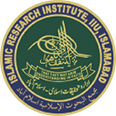THE UMAYYAD GREAT MOSQUE OF DAMASCUS: A TESTAMENT TO SPIRITUAL AND ARCHITECTURAL HISTORY
The Umayyad Great Mosque in Damascus is not only one of the oldest Islamic places of worship in the world but also a symbol of the continuous spiritual, cultural, and political life of the region over many centuries. It is considered a masterpiece of Islamic architecture and plays a vital role in the history of the Muslim world, unifying religious significance with a rich cultural heritage.
Location
The Mosque is situated in the very heart of Damascus, the capital of Syria—one of the oldest continuously inhabited cities in the world. It occupies the historical center of the city, where ancient buildings and narrow streets converge. Geographically, the mosque is located in the southwestern part of the Arab region, serving as a significant landmark for pilgrims and tourists from all over the world.
Historical Background
Construction of the mosque began in the 8th century during the reign of the Umayyad dynasty, which laid the foundations for the development of Islamic architecture and culture in the region. The mosque has suffered multiple times from fires and earthquakes, necessitating extensive restorations. One significant reconstruction was undertaken during the Seljuk Sultan Malik-Shah's reign in the 11th century, when special attention was paid to the dome and arches. In the late 19th and early 20th centuries, a major renovation was commissioned by Sultan Abdul Hamid II; this work, carried out by masters from Istanbul, updated the columns and the roof. Political activities also mark the mosque's history: for instance, it was here that Caliph Muawiyah declared his opposition to Ali ibn Abi Talib, reflecting the mosque's role as a center of power and influence.
Significant Figures
The mosque houses a mausoleum where, according to Islamic tradition and legends, the head of the Prophet Yahya (John the Baptist) – one of the most revered saints – is believed to be preserved. The mosque is also associated with political leaders and religious scholars who, over the centuries, used this place for sermons and making crucial decisions. Among them are Caliph Muawiyah, the founder of the Umayyad dynasty, and Sultan Abdul Hamid II, who organized significant restoration efforts.
Religious Significance
The Umayyad Mosque is a unique spiritual site that historically housed the four major Sunni schools of Islamic jurisprudence: Shafi'i, Hanafi, Hanbali, and Maliki. The main mihrab belongs to the Shafi'i school, underscoring its religious importance. Daily prayers are held here, along with essential religious ceremonies, pre-prayer ablutions, and educational sessions covering the Quran, Hadith, and Fiqh. The mosque serves as a central hub for spiritual enlightenment and the strengthening of faith, gathering believers from various parts of the Islamic world.
Cultural and Tourist Importance
The Great Umayyad Mosque attracts not only pilgrims but also tourists interested in history, art, and architecture. One of its main attractions is the beautifully preserved Byzantine mosaics, which depict urban and natural landscapes executed in a unique technique. The inner courtyard is framed by arched galleries featuring many graceful arches. At the center of the courtyard stands an ablution fountain and domed pavilions. The mosque's three minarets—Western, Eastern, and Northern—each possess their own legends and architectural distinctions, making them unique objects of study. Furthermore, the mosque was a long-standing center for education and science, drawing scholars and students and fostering an atmosphere of cultural exchange and intellectual development.
Current Status
Today, the Umayyad Mosque is protected by the Syrian state and recognized as a world cultural heritage site. Regular restoration work helps preserve its historical appearance and architecture. The mosque is open to visitors, pilgrims, and tourists, with a museum and a pilgrimage center providing the necessary infrastructure. Despite the challenges associated with contemporary political events in the region, the mosque continues to be a symbol of Syria's spiritual unity and cultural heritage, its significance reaffirmed in new historical events where it serves as a symbol of hope and liberation.


















